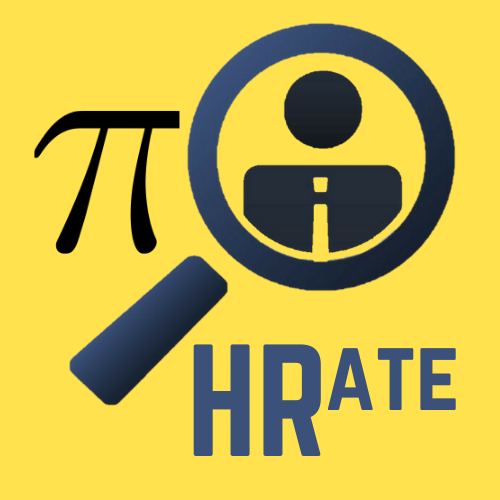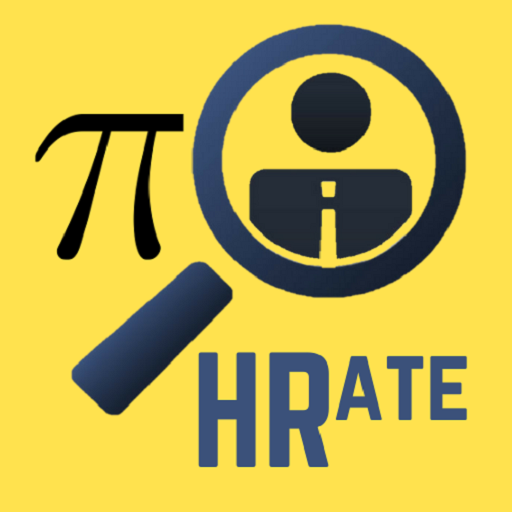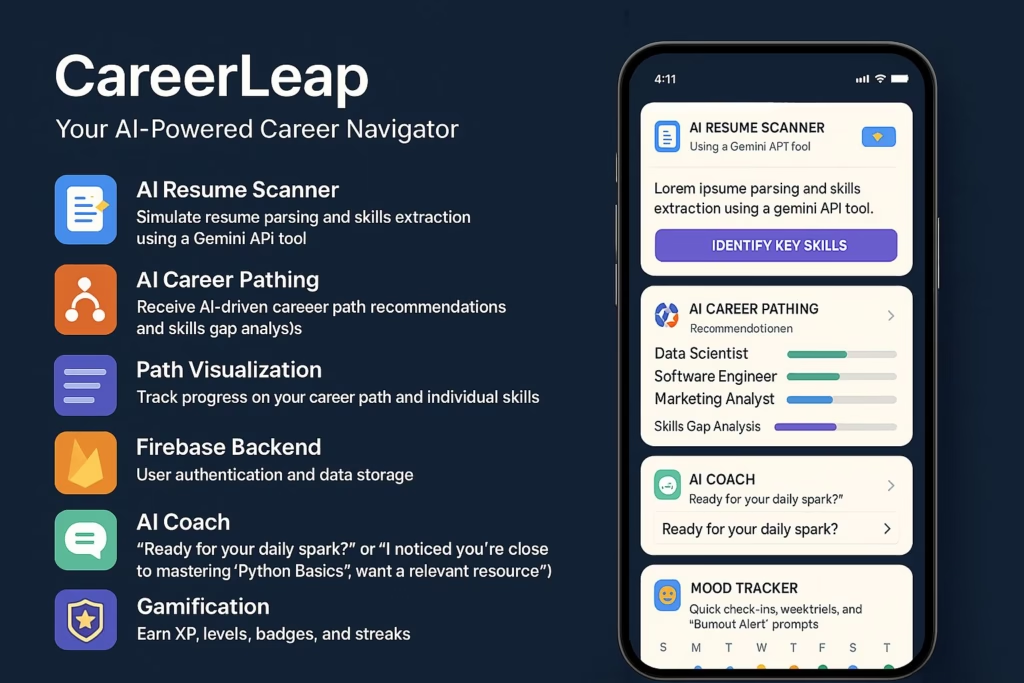The Ultimate Guide to Landing a Job at Amazon in 2025

Amazon. The name resonates globally, synonymous with e-commerce dominance, pioneering cloud computing through AWS, cutting-edge AI, and an unyielding focus on the customer. For ambitious professionals and bright-eyed graduates, securing a job at Amazon in 2025 isn’t just a job; it’s a career-defining move, a launchpad into a world of innovation, scale, and impact. But navigating the path to an Amazon offer letter can feel like an odyssey, a challenging quest demanding meticulous preparation, strategic thinking, and a deep understanding of its unique, often “peculiar,” culture.
This ultimate guide is your compass for that journey. We’ll dissect every stage of the Amazon hiring process, from understanding its core ethos in 2025 to crafting a compelling application, mastering the infamous interview loop, and ultimately, positioning yourself for success. Whether you’re eyeing a coveted Software Development Engineer (SDE) role, a strategic Product Manager position, an operational leadership opportunity, or a creative marketing gig, the principles and tactics outlined here will equip you to put your best foot forward.
I. Understanding the Amazonian DNA in 2025: More Than Just a Job at Amazon
Before you even think about your resume, grasp what makes Amazon tick. In 2025, while its foundational principles remain, the context evolves.
- The Enduring “Day 1” Philosophy: Coined by Jeff Bezos, “Day 1” is the mindset of a startup – agile, inventive, customer-obsessed, and always learning. Even as a global behemoth, Amazon strives to maintain this spirit. For you, this means demonstrating adaptability, a willingness to experiment, and a proactive approach to problem-solving.
- The 16 Leadership Principles (LPs) – Your North Star: These aren’t just corporate jargon; they are the bedrock of Amazon’s culture and are heavily integrated into the hiring process. You must know them, understand them, and, most importantly, be able to provide concrete examples of how you’ve demonstrated them. The 2025 LPs (Customer Obsession, Ownership, Invent and Simplify, Are Right A Lot, Learn and Be Curious, Hire and Develop the Best, Insist on the Highest Standards, Think Big, Bias for Action, Frugality, Earn Trust, Dive Deep, Have Backbone; Disagree and Commit, Deliver Results, Strive to be Earth’s Best Employer, Success and Scale Bring Broad Responsibility) will be the lens through which your interviewers evaluate you.
- Key Focus Areas for 2025:
- AI and Machine Learning: Amazon continues its deep investment in AI across all sectors – from Alexa and AWS AI services to operational efficiencies and personalized customer experiences. Roles in AI/ML are in high demand.
- Sustainability: With “Success and Scale Bring Broad Responsibility” as an LP, Amazon is increasingly focused on its environmental and social impact. If your experience aligns, highlight it.
- Operational Excellence: The backbone of Amazon’s e-commerce, continuous improvement in logistics, supply chain, and fulfillment remains paramount.
- AWS Growth: AWS continues to be a massive engine of innovation and revenue. Opportunities abound for cloud architects, engineers, and sales professionals.
- Global Expansion & New Ventures: Amazon is always exploring new markets and business lines (e.g., healthcare, Kuiper satellites).
II. Charting Your Course: Finding the Right Amazon Role
Amazon’s career portal (amazon.jobs) is vast. Effective navigation is key.
- Strategic Searching on Amazon.jobs:
- Use specific keywords related to your skills and desired roles (e.g., “Python SDE,” “digital marketing manager AWS,” “supply chain program manager”).
- Filter by location, job category, and business line.
- Pay close attention to “Basic Qualifications” and “Preferred Qualifications.”
- Understanding Role Categories:
- Tech Roles: SDEs (I, II, III, Principal, Distinguished), Data Scientists, Applied Scientists, UX Designers, Hardware Engineers, Technical Program Managers (TPMs).
- Non-Tech/Corporate: Product Managers, Program Managers (non-tech), Marketing Managers, Finance Analysts, HR Business Partners, Recruiters, Legal Counsel.
- Operations: Area Managers, Operations Managers, Process Engineers, Safety Specialists.
- AWS Specific: Solutions Architects, Technical Account Managers, Cloud Support Engineers, Sales.
- Internships & Early Career: Amazon offers robust programs for students and recent graduates. These are highly competitive but excellent entry points.
- Aligning Your Profile: Don’t just apply blindly. For each role, analyze how your experience, skills, and past achievements (quantified!) map to the requirements and Amazon’s LPs. Which of your stories best demonstrate “Deliver Results” or “Invent and Simplify” for this specific role?
III. Assembling Your Arsenal: The Standout Application
Your resume and application are your first contact. Make them count.
- The Amazon-Optimized Resume:
- ATS-Friendly: Use a clean, chronological format. Avoid tables, columns, and graphics that confuse Applicant Tracking Systems.
- Keyword Rich: Weave in keywords from the job description naturally.
- STAR Method for Achievements: For each bullet point under your experience, implicitly or explicitly use the STAR method (Situation, Task, Action, Result). Quantify your results whenever possible. Instead of “Managed a project,” try “Led a 5-person team to launch Project X (Action), addressing customer pain point Y (Task/Situation), resulting in a 15% increase in user engagement and $50K cost savings (Result).”
- Leadership Principles: Subtly align your achievements with LPs. If you “took initiative to solve a problem outside your direct scope,” that’s “Ownership.”
- Tailor, Tailor, Tailor: Customize your resume for each specific role you apply for. Generic resumes get lost.
- The Cover Letter (When to Use It): While not always mandatory, a well-crafted cover letter can differentiate you, especially for non-tech or more senior roles. Use it to:
- Express genuine passion for the specific role and Amazon.
- Highlight 1-2 key achievements that directly map to the role’s top requirements and LPs.
- Address any potential gaps or explain career transitions. Keep it concise and impactful.
- Networking – The Smart Way (Ethical & Effective):
- LinkedIn: Identify Amazonians in similar roles or teams. Connect with a personalized note (don’t just ask for a job). Ask for informational insights about their role or team culture.
- Referrals: A referral from a current Amazon employee can significantly boost your application’s visibility. If you’ve made genuine connections, a referral might naturally follow.
- Amazon Events & Career Fairs: Attend virtual or in-person events to learn more and network.
- Alumni Networks: Leverage your university alumni network.
IV. Conquering the Gauntlet: The Amazon Interview Process in 2025
The Amazon interview process is notoriously rigorous, designed to test your skills, cultural fit (LPs), and problem-solving abilities.
- Online Assessments (OAs):
- SDEs/Tech Roles: Often involve coding challenges (e.g., on HackerRank, Codility), debugging tasks, and sometimes work style/LP-based simulations. Practice common data structures and algorithms relentlessly.
- Non-Tech/Operations: May include situational judgment tests (how would you handle X scenario based on LPs?), logical reasoning, and work style assessments.
- Writing Samples: For roles requiring strong written communication (PMs, marketing).
- 2025 Tip: Expect more AI-proctored assessments and potentially more sophisticated simulations.
- Phone Screens (Recruiter & Hiring Manager/Team Member):
- Recruiter Screen (30-45 mins): Verifies your background, interest in Amazon, salary expectations, and gets an initial feel for LP alignment. Be enthusiastic and prepared with concise STAR stories.
- Technical/Team Phone Screen (45-60 mins): Dives deeper into your technical skills (if applicable) or domain expertise. Expect more behavioral questions focused on specific LPs. For SDEs, this might involve a live coding exercise.
- The “Loop” Interview – The Main Event:
- Structure: Typically 4-6 back-to-back interviews (45-60 minutes each), often conducted virtually. Each interviewer (a mix of peers, managers, and potentially a “Bar Raiser”) will focus on specific LPs and functional competencies.
- Behavioral Questions (LP-Focused): This is where your STAR stories shine. Prepare multiple examples for each LP.
- “Tell me about a time you failed.” (Learn and Be Curious, Ownership)
- “Describe a complex problem you solved.” (Dive Deep, Invent and Simplify)
- “Tell me about a time you had to influence a group without authority.” (Earn Trust, Have Backbone)
- “Give an example of when you had to make a decision with incomplete data.” (Bias for Action, Are Right A Lot)
- Be specific, focus on your actions (“I” not “we”), and quantify your results.
- Technical Deep Dives (for SDEs and relevant roles):
- Coding: Solve problems on a shared editor or virtual whiteboard. Explain your thought process aloud. Focus on optimal solutions.
- System Design: For mid-to-senior SDEs. Design scalable systems (e.g., “Design a ride-sharing app,” “Design a URL shortener”). Discuss trade-offs, components, APIs, data models, scalability, and fault tolerance.
- Functional/Role-Specific Questions:
- PMs: Product strategy, PRFAQ critiques, prioritization, metrics.
- Operations: Process improvement, data analysis, problem-solving scenarios.
- Marketing: Campaign strategy, data interpretation, channel expertise.
- The Bar Raiser: An experienced interviewer from a different team, trained to be an objective assessor of LP fit and whether you “raise the bar” for talent at Amazon. They have significant influence on the hiring decision. They often ask tougher, more probing questions.
- Your Questions for Them: Always prepare insightful questions for your interviewers. This shows engagement and curiosity. Ask about team culture, challenges, upcoming projects, or their experience with specific LPs.
- Written Exercises/Presentations (Role-Dependent):
- Some roles (especially PM, PGM, senior leadership, marketing) may require a written assignment (e.g., a 6-pager document analyzing a problem and proposing a solution) or a presentation as part of the loop or a final step. This tests your written communication, strategic thinking, and ability to “Dive Deep.”
V. Tailored Preparation for High-Demand Role Archetypes in 2025
While LPs are universal, role-specific prep is crucial.
- Software Development Engineers (SDEs):
- Data Structures & Algorithms: Master them. LeetCode (Easy, Medium, Hard), Cracking the Coding Interview (CTCI) are your bibles.
- System Design: For SDE II+, study resources like “System Design Interview – An Insider’s Guide” by Alex Xu, Grokking the System Design Interview, and practice with peers.
- Language Proficiency: Be strong in at least one language (Java, Python, C++, C# are common).
- Product Managers (PMs/PM-Ts):
- PRFAQ (Press Release/FAQ): Understand Amazon’s “working backwards” process. Practice writing PRFAQs.
- Case Studies: Product design (“Design X for Y user”), strategy, metrics, A/B testing.
- Behavioral: Heavily LP-focused, especially Customer Obsession, Think Big, Invent and Simplify.
- Operations & Program Managers:
- Metrics & Data: Be comfortable analyzing data, identifying trends, and driving improvements.
- Process Optimization: Examples of how you’ve streamlined processes, reduced waste, or improved efficiency (Frugality, Invent and Simplify).
- Problem Solving: Structured approaches to complex operational challenges.
- AWS Roles (Solutions Architects, TAMs):
- Deep AWS Knowledge: Certifications (Associate, Professional, Specialty) are highly valuable.
- Customer-Facing Skills: Strong communication, ability to explain complex technical concepts simply (Customer Obsession, Earn Trust).
- Problem Solving: Architecting solutions for customer use cases.
VI. The Aftermath: Post-Interview Etiquette and Navigating the Offer
- Thank You Notes: Send personalized thank-you emails to each interviewer within 24 hours. Briefly reiterate your interest and reference a specific point from your conversation.
- The Waiting Game & Feedback: Amazon usually communicates decisions within 5 business days, but it can vary. If you don’t hear back, a polite follow-up with your recruiter is acceptable after a week or so. Amazon’s feedback process post-loop is a formal debrief where all interviewers discuss your performance against the LPs and role requirements.
- Receiving an Offer: Congratulations! Take time to review it carefully.
- Negotiation (If Applicable): Amazon’s offers often include base salary, a sign-on bonus (often paid over two years), and Restricted Stock Units (RSUs) that vest over a period (typically 4 years with a back-loaded vesting schedule like 5%, 15%, 40%, 40%).
- Research market rates for similar roles (Levels.fyi is a good resource).
- If you have competing offers or strong justification, you may be able to negotiate, particularly on the sign-on bonus or RSUs. Be professional and data-driven in your approach.
- Understand the RSU vesting schedule and its impact on your total compensation over time.
VII. Key Trends & Final Tips for Amazon in 2025
- AI Literacy: Even for non-AI roles, understanding the basics of AI and its implications for your field will be an advantage.
- Remote/Hybrid Nuances: Amazon’s return-to-office policies have been evolving. Understand the expectations for your specific role and team regarding in-office presence.
- Show, Don’t Just Tell: Your past actions (as told through STAR stories) are more powerful than generic statements about your skills.
- Be Genuinely “Peculiar”: Amazon embraces its unique culture. Show that you understand and appreciate it.
- Resilience is Key: The process is tough. Don’t get discouraged by setbacks. Learn from every experience. Many successful Amazonians didn’t get an offer on their first try.
VIII. Is an Amazon Career Your Next Chapter in 2025?
Landing a job at Amazon in 2025 is a significant achievement that requires dedication, strategic preparation, and a genuine alignment with its core values. It’s a challenging environment that pushes individuals to grow, innovate, and deliver at an unprecedented scale. If you are driven by customer obsession, thrive on solving complex problems, and are ready to embrace a culture of continuous learning and high standards, then the Amazonian odyssey might just be the most rewarding journey of your career.
Prepare diligently, be authentic, and demonstrate how you will not just fit in, but actively contribute to raising the bar. Your Amazon adventure awaits.
- The Path Less Traveled: Entering Apple Careers as a Career Changer or Mature Professional
- Making the Career Leap: How to Transition Between Roles and Teams at Microsoft
- Navigating the Hybrid Workplace: How Microsoft is Defining the Future of Work
- Cracking the Code: A Deep Dive into Microsoft Technical Interview for Software Engineers
- From Conflict to Collaboration: Demonstrating Influence in Cross-Functional Roles at Meta
FAQ
What are the most important things Amazon looks for in candidates in 2025?
Beyond role-specific skills, Amazon heavily prioritizes alignment with its 16 Leadership Principles (LPs). In 2025, strong problem-solving abilities, adaptability, a customer-obsessed mindset, and the capacity to “Invent and Simplify” are crucial. Demonstrating how you embody these LPs through concrete examples (using the STAR method) during your interview is paramount. Additionally, familiarity with current tech trends, especially AI and data analytics (even for non-tech roles), can be advantageous.
How critical is it to tailor my resume for each Amazon job application?
Extremely critical. Amazon receives a vast number of applications, and many are initially screened by Applicant Tracking Systems (ATS). Tailoring your resume with keywords from the specific job description helps you pass this initial screening. More importantly, it shows the hiring manager that you’ve carefully considered the role and how your experience directly applies. Highlight achievements that resonate with the specific requirements and Amazon’s LPs relevant to that role.
What is the “Bar Raiser” in the Amazon interview process, and how do I prepare for them?
The Bar Raiser is an experienced Amazon interviewer from a different team than the one you’re applying to. Their role is to be an objective third party, ensuring that every new hire “raises the bar” for talent at Amazon and aligns strongly with the Leadership Principles. They have significant influence on the hiring decision. To prepare, focus on deeply understanding all LPs and have multiple strong STAR method examples for each. Bar Raisers often ask more challenging, probing questions to test your depth of thought, problem-solving approach, and genuine LP alignment.
How important is networking for getting a job at Amazon?
Networking can be very beneficial, but it needs to be done strategically and ethically. A referral from a current Amazon employee can significantly increase the visibility of your application. However, focus on building genuine connections by seeking informational insights about roles, teams, or the culture, rather than directly asking for a job or referral upfront. LinkedIn, alumni networks, and Amazon-hosted career events are good avenues for this.
What are the biggest mistakes candidates make when interviewing at Amazon?
Common mistakes include:
– Not adequately preparing STAR method stories for each Leadership Principle.
– Providing generic answers instead of specific, quantifiable examples of their actions and impact.
– Failing to “Dive Deep” into problems or questions.
– Not asking insightful questions at the end of the interview (showing lack of curiosity).
– For technical roles, not clearly explaining their thought process during coding or system design exercises.
– Underestimating the importance of cultural fit and LP alignment.




